Top speed 540 km/h Wingspan 29 m Cruise speed 430 km/h First flight 1974 | Range 2,630 km Length 24 m Engine type Turboprop | |
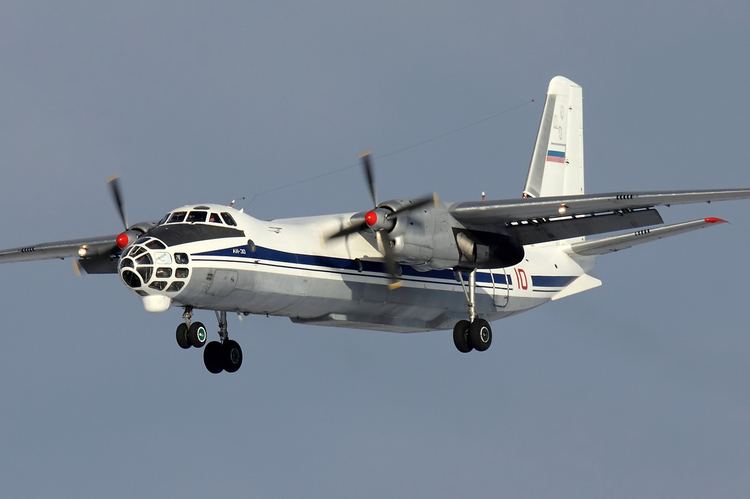 | ||
Ukraine air force antonov an 30b
The Antonov An-30 (NATO reporting name: Clank), is a development of the An-24 designed for aerial cartography.
Contents
- Ukraine air force antonov an 30b
- Antonov an 30 russian air force plane crash
- Development
- Design
- Operational history
- Accidents
- Variants
- Military operators
- Former Military operators
- Civil operators
- Former civil operators
- Specifications An 30
- References
Antonov an 30 russian air force plane crash
Development
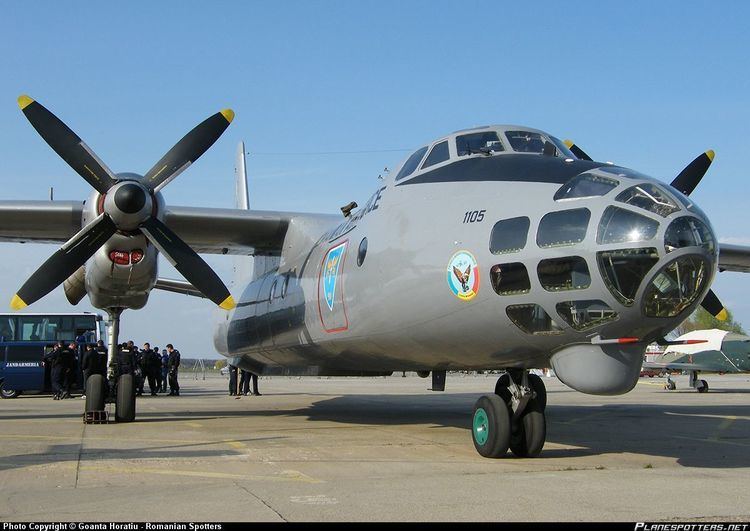
The first aerial survey version of the Antonov An-24 was designed by the Beriev OKB and designated An-24FK. The FK stood for fotokartograficheskiy (photo mapping). The prototype was converted from a production An-24A at Beriev's No. 49 construction shop during 1966. The An-24FK made its first flight on 21 August 1967, with state acceptance trials being completed in 1970 and civil certification completed in 1974. Redesignated An-30, production began in 1971 at the Antonov. 123 production An-30s were manufactured between 1971 and 1980 in Kiev in 2 main versions.
Design
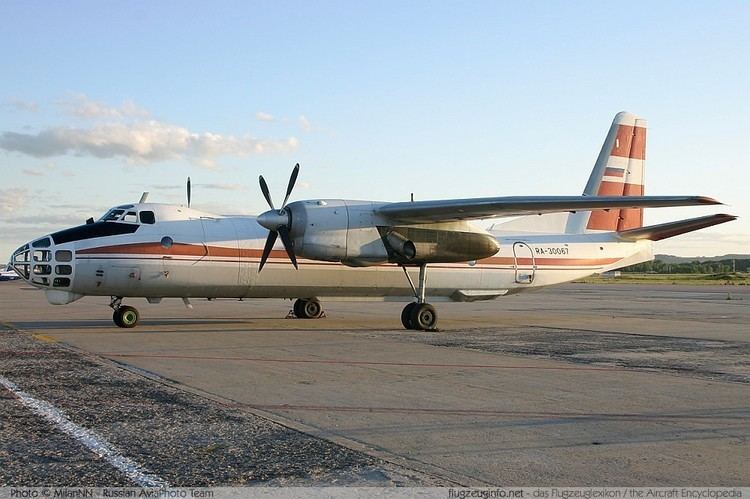
The Antonov An-30 is a derivative of the An-24 fitted with an entirely new fuselage forward of frame 11. The fuselage nose is extensively glazed, reminiscent of the Boeing B-29. Housed within the new nose section is the navigator and precise navigational equipment, including an optical sight for ensuring accuracy of aerial photography. To enable accurate and repeatable survey flights, standard equipment for the An-30 included computer flight path control technology. This additional equipment replaced the radar. The positioning of the new navigational equipment required the flightdeck to be raised by 41 cm in comparison to the An-24, giving the aircraft its other main feature, a hump containing the cockpit, similar to the Boeing 747.
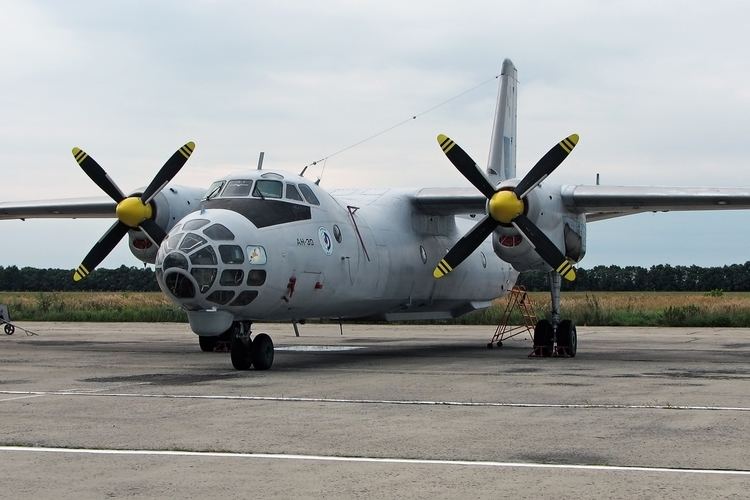
The radio operator and flight engineer sat in the first cabin aft of and below the flightdeck. The mission equipment was located further aft, in a cabin featuring five camera windows in the floor. Each camera window could be closed with covers to protect the glass panels. The covers were located in special fairings protruding from the fuselage underside. In the normal aerial photography role, four or five cameras were carried aboard. Three cameras were mounted vertically, intended for mapping purposes. The remaining two cameras were pointed at an angle of 28° on each side of the aircraft, for oblique photography. The same fuselage compartment contained workstations for two camera operators and a crew rest area.
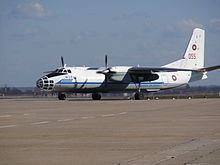
The aircraft's cameras could be used between 2,000 and 7,000 m (6,500 and 23,000 ft) and the scale of the resultant photographs was between 1:200,000 and 1:15,000,000. The aircraft was supplied with four or five cameras.
The An-30 was powered by two Ivchenko AI-24VT turboprops with a take-off rating of 2,820 ehp.
Operational history
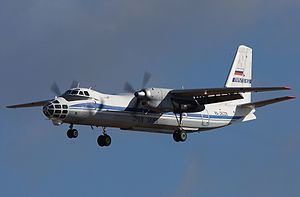
As well as its principal use as a survey aircraft, it has also been used by Bulgaria, Czech Republic, Romania, Russia and Ukraine to carry out surveillance under the Open Skies Treaty.
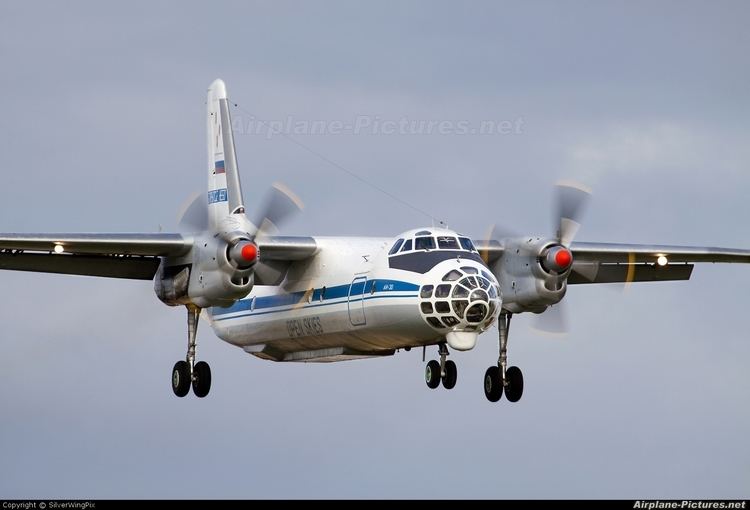
The An-30 has also been used as a weather control aircraft as the An-30M. Some have been fitted with frozen tanks of carbon dioxide to be ejected into the sky to form artificial rain clouds. These An-30s have also been put to use to avoid crop-damaging hailstorms and also to maintain good weather for, as examples, new airplane maiden flights, important parades like the 1st of May and the 850th anniversary of Moscow in September 1997.
Between 1971 and 1980 a total of 115 aircraft were built and 23 were sold abroad to Afghanistan, Bulgaria, China, Cuba, Czechoslovakia, Mongolia and Vietnam.
An-30s completely mapped Afghanistan in 1982, with one shot down by a MANPADS during an aerial photography flight in the Kabul area south of the Panjshir Valley on 11 March 1985. Cuban An-30s saw active service in Angola in 1987.
On 22 April 2014, a Ukrainian An-30 was hit by small arms fire while on a surveillance mission over the town of Sloviansk in Eastern Ukraine, which was being held by pro-Russian separatists. The plane landed safely with minor damage. On 6 June 2014, a Ukrainian An-30B was shot down near the city of Slavyansk in eastern Ukraine, reportedly by a MANPADS fired by local separatists.
Accidents
On 23 May 2012 Russian Open Skies Antonov-30 caught fire during an emergency landing at an airport outside the Czech city of Caslav. According to unconfirmed reports, the accident occurred because the crew was unable to extend the landing gear. Seven passengers were injured, out of 14 Russian and 9 Czech citizens on board.
Variants
Military operators
Former Military operators
Civil operators
Former civil operators
Specifications (An-30)
Data from Jane's All The World's Aircraft 1988–89
General characteristics
Performance
Avionics
5 positions for large cameras. Other survey equipment can be fitted.
